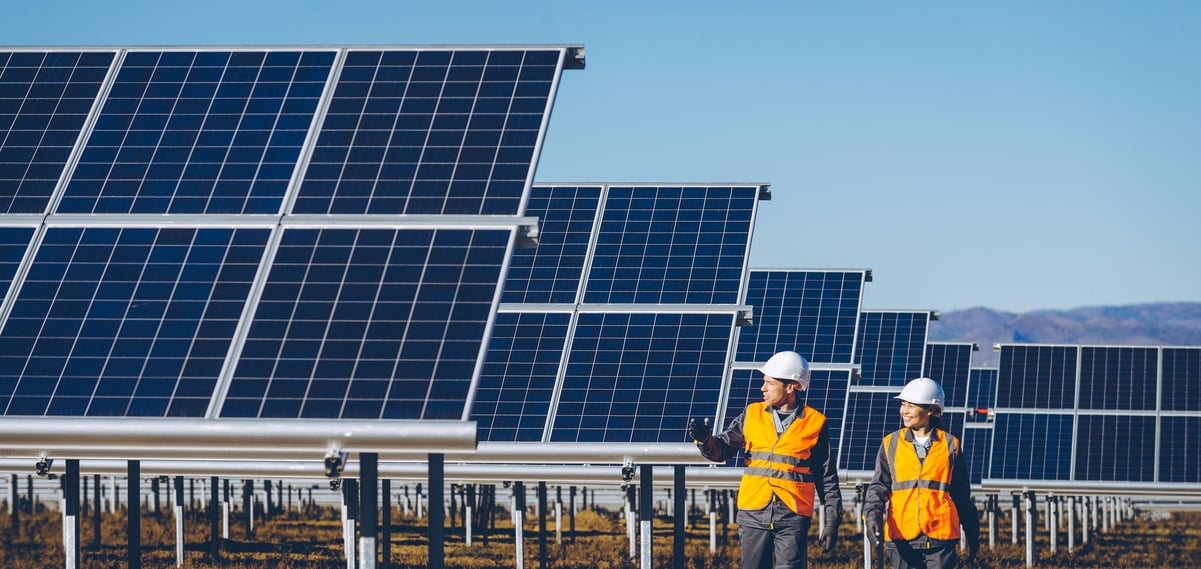First Solar (FSLR +1.06%) is going through a couple of major transitions in its business model that will impact operations for years to come. The transition that's gotten the most attention is the upgrade from Series 4 to Series 6 solar panels, which will cost less to produce and install than the older model.
But another big transition is First Solar's moving away from building and then selling solar systems to primarily selling solar components. In particular, First Solar will focus on selling solar panels, which means sales per watt could fall significantly long-term. Here's how it could impact finances.

Image source: First Solar.
Making less with more
In 2017, First Solar produced 2,283.9 MW of solar panels and generated $2.941 billion in revenue. While the timing of production and revenue recognition doesn't line up perfectly, the $1.288 per watt in sales is a decent gauge for what the company is generating for each unit of production.
Guidance for 2018 is for 2.9 to 3.0 GW of solar panel shipments and $2.45 billion to $2.65 billion in revenue, or $0.864 per watt. That's a significant reduction versus 2017 and shows the impact of changes in the business model that will reduce project development to only about 1 GW out of the 5.7 GW of production. Long-term, we should expect revenue per watt to decrease as fewer fully developed projects are sold.
How much will sales fall?
First Solar is increasing production to 5.7 GW by the end of 2020, but if sales per watt decline, it may not mean higher profitability. Below is a chart with revenue at different revenue-per-watt levels and potential operating profit assuming an 18% gross margin (based on management comments) and $400 million of operating costs (the low end of 2018 guidance).
| Metric | Low Revenue | Medium Revenue | High Revenue |
|---|---|---|---|
| Revenue per watt | $0.50 | $0.65 | $0.80 |
| Total revenue | $2.85 billion | $3.71 billion | $4.56 billion |
| Gross profit | $513 million | $667 million | $821 million |
| Operating profit | $113 million | $267 million | $421 million |
Calculations by the author based on First Solar management's comments.
You can see that if revenue per watt falls to $0.50, First Solar won't be far above breakeven. This isn't out of the question because solar panels today cost $0.30 to $0.40 per watt, so panel-only sales will be even lower than $0.50 per watt. There's some upside compared to solar panel prices from limited project development and engineering, procurement, and construction contracts as well as O&M, but it's unlikely First Solar will ever see $1 per watt in sales ever again.
I'll also note that a gross margin of 18% is probably optimistic long-term. Management has said that gross margins are expected to be over 20% for solar panel sales in the next year, but as U.S. solar tariffs subside and competing technologies lower costs, we'll see gross margins shrink again. This is a consistent trend in the history of solar manufacturing.
Is First Solar going to be as profitable as investors think?
Investors who think First Solar will be a massive growth engine for the next half-decade may be surprised to see that strategic shifts the company is making could mean that revenue will decline even as production increases.
The numbers above are just projections, but they show how First Solar's market cap of $6.8 billion may make the stock expensive when Series 6 production reaches full steam. Even when you consider the $2.1 billion to $2.3 billion in net cash expected at the end of 2018, at best I think shares will trade for 10 times operating profit in 2020, a ratio that has hovered in the mid-single digits for the past year, with lots of room for downside if gross margins are in the mid-teens. The stock may already be priced to perfection.






